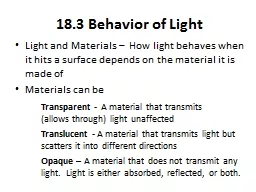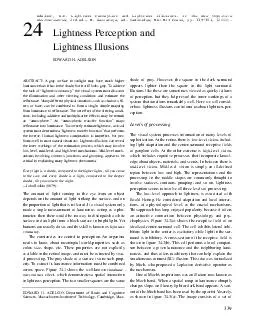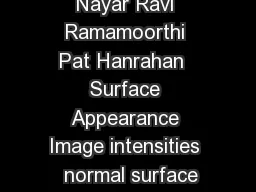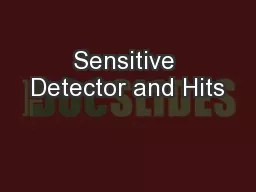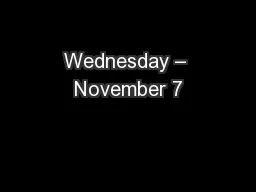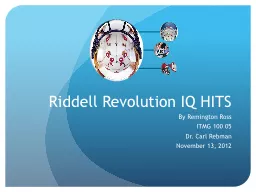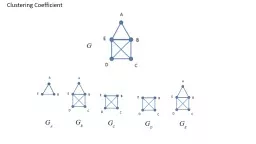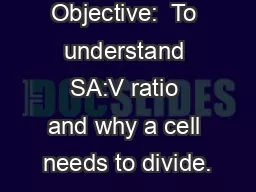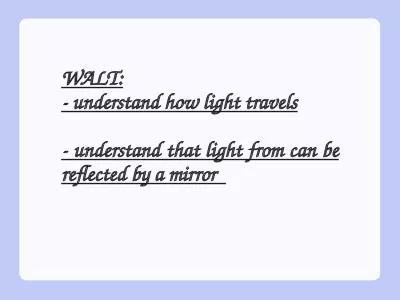PPT-18.3 Behavior of Light Light and Materials – How light behaves when it hits a surface
Author : natalia-silvester | Published Date : 2018-09-30
Materials can be Transparent A material that transmits allows through light unaffected Translucent A material that transmits light but scatters it into different
Presentation Embed Code
Download Presentation
Download Presentation The PPT/PDF document "18.3 Behavior of Light Light and Materia..." is the property of its rightful owner. Permission is granted to download and print the materials on this website for personal, non-commercial use only, and to display it on your personal computer provided you do not modify the materials and that you retain all copyright notices contained in the materials. By downloading content from our website, you accept the terms of this agreement.
18.3 Behavior of Light Light and Materials – How light behaves when it hits a surface: Transcript
Download Rules Of Document
"18.3 Behavior of Light Light and Materials – How light behaves when it hits a surface"The content belongs to its owner. You may download and print it for personal use, without modification, and keep all copyright notices. By downloading, you agree to these terms.
Related Documents

